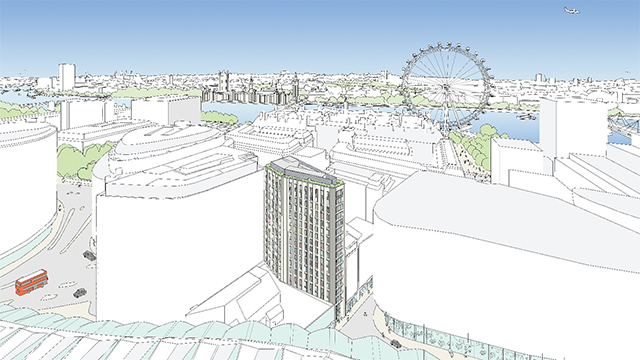 Five years ago, when build-to-rent was more theory than reality, advocates looked both east and west for examples of how the UK market could develop.
Five years ago, when build-to-rent was more theory than reality, advocates looked both east and west for examples of how the UK market could develop.
In North America, enormous listed companies compete using well-maintained highly serviced apartments in a cut-throat market. In Europe, particularly Germany, institutional investors own thousands of rental blocks that provide steady, regulated income returns.
But as more rental units are built every day in the UK, there seems to be a universal focus on the US model. Why is that, and what does it mean for the sector?
Money talks
An obvious reasons for the North American focus is the fact the region is the origin of much of the money coming into the UK.
While a number of European investors have made a move – Patrizia, APG, PGGM, Neighbour – the big bucks have come from stateside: Greystar, Lonestar, M3 Capital, Related, Real Star and Ivanhoé Cambridge, to name a few.
They have not brought with them an exclusively US model, but they have developed in line with their core principles, according to Alexandra Notay, director at Places for People. This means a competitive, management and amenity-orientated premium product.
But beyond this, and perhaps more importantly, was the transferability of this different model to the UK market.
While Germany has an extremely high proportion of renters, due to the way reconstruction happened after the second world war, it is largely no-frills. Spare flats, no additional services and highly personalised by tenants, who literally bring the kitchen sink with them.
Jennet Siebrets, head of residential research at CBRE, equates it more closely with the social rented market. She also points out, crucially, the regulation of tenancies is very different.
“The issue with Germany is they have rent caps and long-term tenancies. It is a completely different market to ours there,” she says.
Andrew Stanford, residential fund manager at LaSalle Investment Management, was previously head of the government’s PRS taskforce and responsible for kick-starting investment into the PRS.
He says that a move away from the UK’s Assured Shorthold Tenancy agreement, which essentially means market rents, would have led to less investment.
“It’s not really about “favouring” the US model as such but reflects the fact that like the UK’s PRS tenancies, US multi-family tenancies are let at market rents,” he says.
“As a consequence, it is only natural for those investing or designing policy for the UK’s build to rent market to turn to the US for inspiration.”
One could say that under the US model there is also more opportunity to be entrepreneurial – and essentially make a profit for investors. However, the regulated tenancy in Germany still has billions pumped into it by institutions.
“It’s popular with investors because it still offers attractive returns in comparison to a very low risk profile,” says Jörg Schwagenscheidt, chief executive of PMM Partners Germany.
Missing out
So has the UK missed a trick? Should there be a higher focus on the cheaper, mass produced German model, to increase supply and encourage more long term, stable investment? If the overall objective is housing supply, it would have produced more.
Not necessarily. Firstly, such a
model would not work well with high
UK land prices. Secondly, any mention of the phrase “regulation” deters investment.
And thirdly, it is worth remembering that shorter, less regulated tenancies create more competition between landlords, which is better for tenants.
“In the UK market, you normally agree on a one or two-year term, which means competition is much higher,” says Schwagenscheidt, who explains that tenants can move more often, to find the best value.
This also makes the assumption any focus is one way.
Jacqui Daly, director of residential research at Savills, does not agree the UK is focusing on the US model exclusively, but says it is developing its own product.
“I don’t think we are favouring one model over the other. It’s right to say we have more Canadian and US investors coming into the market, and perhaps that’s influencing the market” she says.
“Really we have to take good practice from different models.”
Siebrets thinks that diversity will come as the market grows. “I think once we have an established market, operators will start to diversify. But at the moment it’s high end: they want to be established as quality providers, before they go a little more lower end.”
• To send feedback, e-mail alex.peace@estatesgazette.com or tweet @egalexpeace or @estatesgazette










